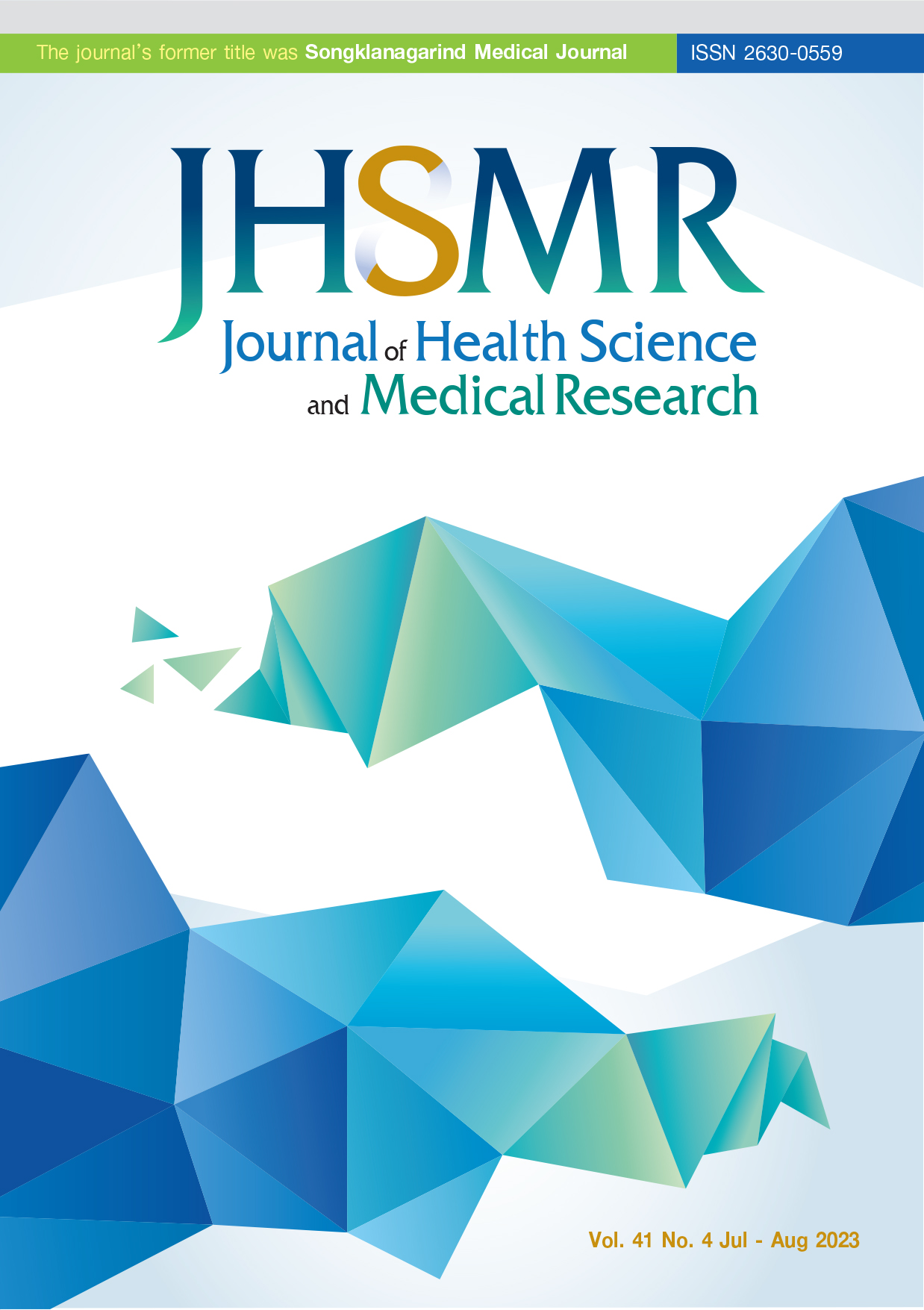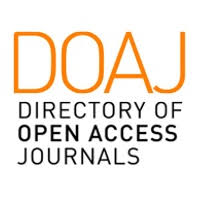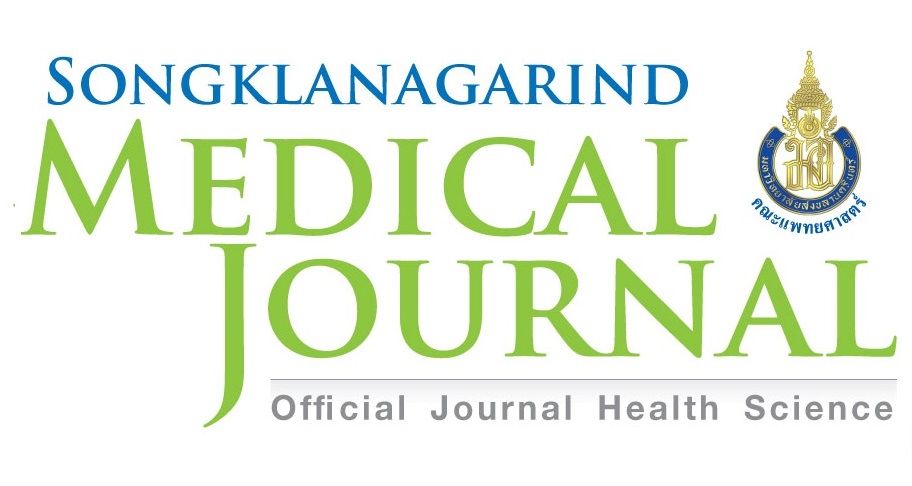Association between Glucose Metabolism and Oral Combined Contraceptive Pills or Cyclic Progestin in Thai Women with Polycystic Ovary Syndrome: A 3-year Observational Study
DOI:
https://doi.org/10.31584/jhsmr.2023920Keywords:
cyclic progestin, fasting blood glucose, oral combined contraceptive pills, polycystic ovary syndromeAbstract
Objective: To measure the difference in fasting blood glucose (FBG) among Thai women with polycystic ovary syndrome (PCOS), having received either oral combined contraceptive pills (OCP) or cyclic progestin, during 3 years of treatment.
Materials and Methods: The data were collected by a retrospective chart review of women with PCOS, who had been treated at Siriraj Hospital before June 2019, backward to the year 2000. The patients were divided into two groups, according to their different treatments, namely: an OCP group and a cyclic progestin group. There were 44 cases in each group, and both groups had received complete hormonal treatment over 3 years.
Results: The patients’ baseline characteristics showed a significantly lower body mass index (BMI) and waist circumference (WC) in the OCP group than in the cyclic progestin treatment group. After the 3-year period of treatment, the FBG differences in the OCP group and cyclic progestin treatment group were 3.4±8.4 and 3.6±8.5 mg/dL, respectively; which revealed no statistical significance. Additionally, the difference in the WC and metabolic profile between the studied groups after 3 years of treatment also revealed no significance. However, BMI presented a significant difference between the two hormonal regimens after 3 years of treatment (p-value=0.007), with higher differences in the OCP treatment group.
Conclusion: There was no statistically significant difference in FBG between the beginning and at the third year of treatment found in both regimens of hormonal treatment in Thai PCOS women.
References
Conway G, Dewailly D, Diamanti-Kandarakis E, Escobar Morreale HF, Franks S, Gambineri A, et al. The polycystic ovary syndrome: a position statement from the European Society of Endocrinology. Eur J Endocrinol 2014;171:P1-29.
Techatraisak K, angsuwathana S, Rattanachaiyanont M, Tanmahasamut P, Leerasiri P, Indhavivadhana S. Gynecological endocrinology patients attending siriraj hospital at the beginning of the new millennium. Siriraj Med J 2007;59.
Kaewnin J, Vallibhakara O, Arj-Ong Vallibhakara S, Wattanakrai P, Butsripoom B, Somsook E, et al. Prevalence of polycystic ovary syndrome in Thai university adolescents. Gynecol Endocrinol 2018;34:476-80.
Rotterdam, ESHRE ASRM-Sponsored PCOS consensus workshop group. Revised 2003 consensus on diagnostic criteria and long-term health risks related to polycystic ovary syndrome (PCOS). Hum Reprod 2004;19:41-7.
Gambineri A, Pelusi C, Vicennati V, Pagotto U, Pasquali R. Obesity and the polycystic ovary syndrome. Int J Obes Relat Metab Disord 2002;26:883-96.
Wongwananuruk T, Rattanachaiyanont M, Leerasiri P, Indhavivadhana S, Techatraisak K, Angsuwathana S, et al. The usefulness of homeostatic measurement assessment-insulin resistance (HOMA-IR) for detection of glucose intolerance in thai women of reproductive age with polycystic ovary syndrome. Int J Endocrinol 2012;2012:571035.
Wongwananuruk T, Rattanachaiyanont M, Indhavivadhana S, Leerasiri P, Techatraisak K, Tanmahasamut P, et al. Prevalence and clinical predictors of insulin resistance in reproductive-aged thai women with polycystic ovary syndrome. Int J Endocrinol 2012;2012:529184.
Indhavivadhana S, Wongwananuruk T, Rattanachaiyanont M, Techatraisak K, Leerasiri P, Tanmahasamut P, et al. Prevalence of metabolic syndrome in reproductive-aged polycystic ovary syndrome Thai women. J Med Assoc Thai 2010;93:653-60.
Teede HJ, Misso ML, Costello MF, Dokras A, Laven J, Moran L, et al. Recommendations from the international evidence-based guideline for the assessment and management of polycystic ovary syndrome. Hum Reprod 2018;33:1602-18.
Nadal A, Rovira JM, Laribi O, Leon-quinto T, Andreu E, Ripoll C, et al. Rapid insulinotropic effect of 17beta-estradiol via a plasma membrane receptor. FASEB J 1998;12:1341-8.
Gonzalez C, Alonso A, Grueso NA, Diaz F, Esteban MM, Fernandez S, et al. Role of 17beta-estradiol administration on insulin sensitivity in the rat: implications for the insulin receptor. Steroids 2002;67:993-1005.
Howell SL, Tyhurst M, Green IC. Direct effects of progesterone on rat islets of Langerhans in vivo and in tissue culture. Diabetologia 1977;13:579-83.
Spellacy WN, Buhi WC, Birk SA. Effects of norethindrone on carbohydrate and lipid metabolism. Obstet Gynecol 1975; 46:560-3.
Adeniji AA, Essah PA, Nestler JE, Cheang KI. Metabolic effects of a commonly used combined hormonal oral contraceptive in women with and without polycystic ovary syndrome. J Womens Health (Larchmt) 2016;25:638-45.
Mes-Krowinkel MG, Louwers YV, Mulders AG, de Jong FH, Fauser BC, Laven JS. Influence of oral contraceptives on anthropomorphometric, endocrine, and metabolic profiles of anovulatory polycystic ovary syndrome patients. Fertil Steril 2014;101:1757-65e1.
Halperin IJ, Kumar SS, Stroup DF, Laredo SE. The association between the combined oral contraceptive pill and insulin resistance, dysglycemia and dyslipidemia in women with polycystic ovary syndrome: a systematic review and meta analysis of observational studies. Hum Reprod 2011;26:191-201.
Glisic M, Shahzad S, Tsoli S, Chadni M, Asllanaj E, Rojas LZ, et al. Association between progestin-only contraceptive use and cardiometabolic outcomes: a systematic review and meta-analysis. Eur J Prev Cardiol 2018;25:1042-52.
Ehrmann DA. Polycystic ovary syndrome. N Engl J Med 2005; 352:1223-36.
Wongwananuruk T, Indhavivadhana S, Rattanachaiyanont M, Techatraisak K, Leerasiri P, Tanmahasamut P, et al. Characteristics of 250 reproductive-aged polycystic ovary syndrome Thai women at Siriraj Hospital. J Med Assoc Thai 2010;93:399-405.
Diamanti-Kandarakis E. Role of obesity and adiposity in polycystic ovary syndrome. Int J Obes (Lond) 2007;31(Suppl2): S8-13; discussion S31-2.
Krauss RM, Burkman RT Jr. The metabolic impact of oral contraceptives. Am J Obstet Gynecol 1992;167:1177-84.
Cortes ME, Alfaro AA. The effects of hormonal contraceptives on glycemic regulation. Linacre Q 2014;81:209-18.
Lopez LM, Grimes DA, Schulz KF. Steroidal contraceptives: effect on carbohydrate metabolism in women without diabetes mellitus. Cochrane Database Syst Rev 2019;2019. doi: 10.1002/ 14651858.CD006133.pub5.
Rabe T, Runnebaum B. Progestins and carbohydrate meta bolism. Int J Fertil 1986;31 SU [UPDATE]:31-45.
Silva-Bermudez LS, Toloza FJK, Perez-Matos MC, de Souza RJ, Banfield L, Vargas-Villanueva A, et al. Effects of oral contraceptives on metabolic parameters in adult premeno pausal women: a meta-analysis. Endocr Connect 2020;9:978- 98.
Skouby SO, Andersen O, Petersen KR, Molsted-Pedersen L, Kuhl C. Mechanism of action of oral contraceptives on carbohydrate metabolism at the cellular level. Am J Obstet Gynecol 1990;163:343-8.
Manzoor S, Ganie MA, Amin S, Shah ZA, Bhat IA, Yousuf SD, et al. Oral contraceptive use increases risk of inflammatory and coagulatory disorders in women with polycystic ovarian syndrome: an observational study. Sci Rep 2019;9:10182.
Downloads
Published
How to Cite
Issue
Section
License

This work is licensed under a Creative Commons Attribution-NonCommercial-NoDerivatives 4.0 International License.
























